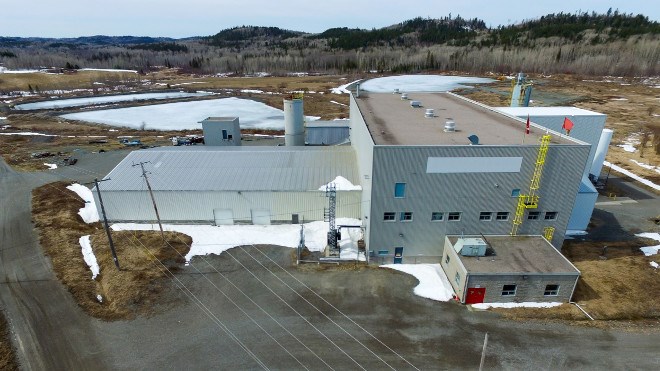A cobalt exploration company is considering the restart of a dormant refinery in northeastern Ontario.
First Cobalt has started a review of the anticipated start-up costs of the hydrometallurgical cobalt-silver-nickel facility it acquired last year.
Located five kilometres east of the Town of Cobalt, the refinery building and settling ponds sit on 40 acres, but the facility is permitting to expand up to 120 acres.
The Primero Group, a Montreal engineering firm, has been hired to do a desktop study review of the refinery. Their study results will be revealed sometime in this year’s second quarter.
First Cobalt wants to find out the restart costs but also wants a scenario provided on the capital requirements to expand the facility within its current building footprint.
The refinery was placed on care and maintenance in 2015. It is the only permitted refinery in North America capable of extracting cobalt to produce battery-grade material.
First Cobalt controls over 11,700 hectares of ground in the Cobalt Camp, which includes about 50 old silver mines. These operations never mined, explored, or inventoried for its cobalt resource.
In March, First Cobalt said it intended to expand its holdings by entering into a proposed friendly merger with US Cobalt, which owns the Iron Creek Cobalt Project in Idaho. US Cobalt will vote on the merger on May 17.
First Cobalt wants to use the refinery to process ore from northeastern Ontario and Idaho, but is also entertaining the idea of allowing outside companies to treat their cobalt material there
“The First Cobalt Refinery is a unique and strategic asset that is fully permitted to process North American feedstock,” said company president-CEO Trent Mell in a news release.
“As we move forward with a proposed acquisition of US Cobalt and ongoing studies of early cash flow opportunities in the Cobalt Camp from historic muckpile material, this refinery study will drive us closer to our goal of being a vertically integrated North American cobalt company.”
The facility was commissioned in 1996 and includes an empty feed warehouse that once housed a mill, two settling ponds, and an autoclave pond.
A 2012 report by Hatch estimated the replacement value of the refinery at US$78 million.
The three-circuit refinery is permitted to process feed containing high concentrations of arsenic, such as those found in the Cobalt area, Idaho and from anywhere in North America.




